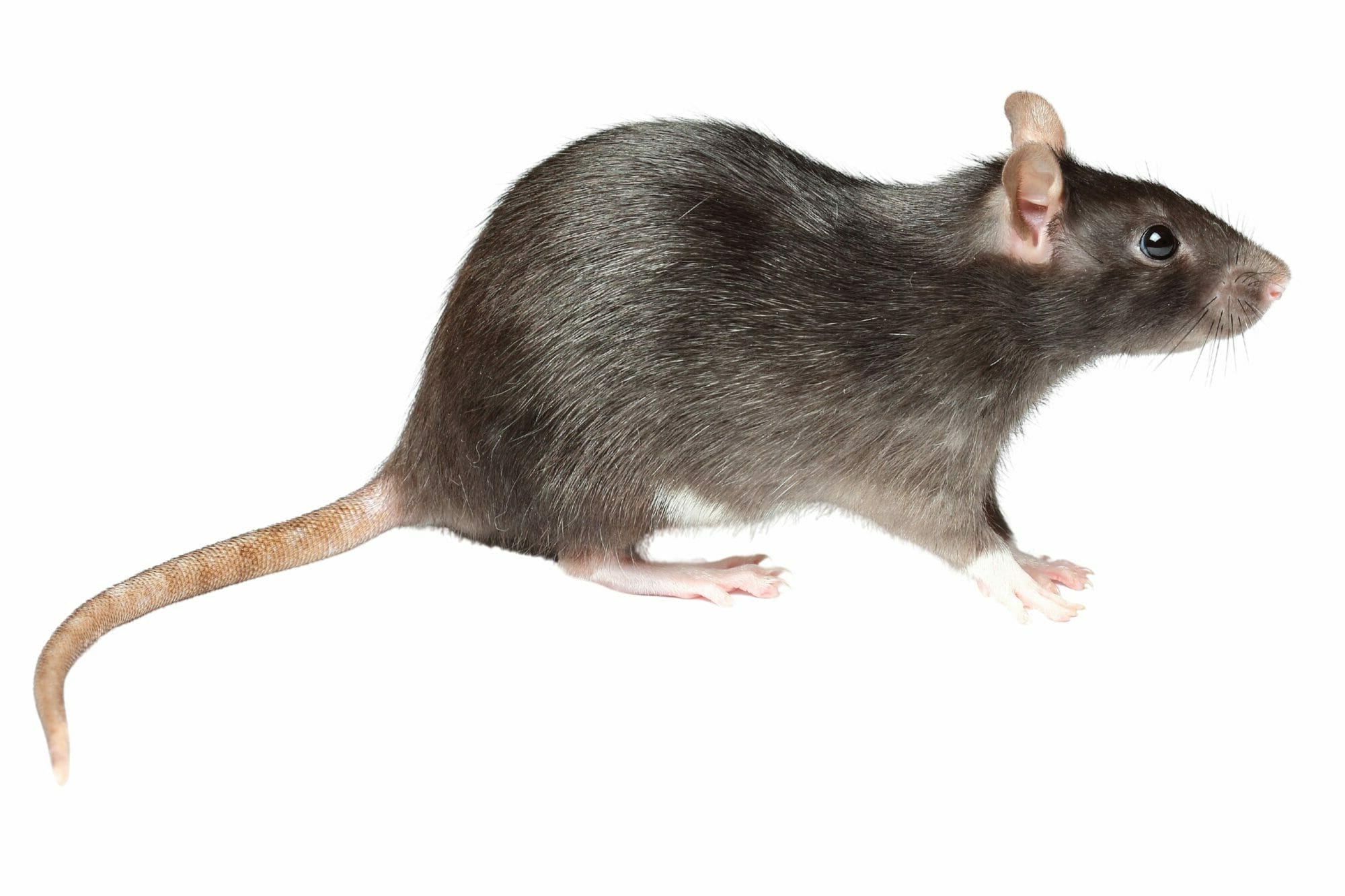Rats and mice can spread several diseases directly by contaminating our food with their urine, or indirectly through rodent fleas and mites. Main rodent borne diseases include but are not limited to: Hantavirus Pulmonary Syndrome (HPS), Rat Bite Fever, Leptospirosis (Weil’s disease), Salmonellosis (Salmonella), Trichinosis (infection of intestines), and Plague (carried by rodent fleas). It is important to control rodents around your home, but especially in restaurants and hotels.
Diet
Norway Rats prefer foods with high protein such as meats and fish, but will eat almost any type of food. Pet food alone can maintain a large population of rats. Rats do need water to survive, unlike other rodents. They can obtain water from toilets, sinks, rain puddles, or condensation from utility pipes.
Biology
Distinctive features of a Norway rat include: a blunt nose, small ears, small eyes, and a tail shorter than their body. Their fur is shaggy and coarse varying in color. Rats are nocturnal, thus their peak activity is at dusk or before dawn. The young rats reach sexual maturity within weeks. Female rats average 3-7 litters a year, with 5-10 pups per litter. Norway rats are often found living in the first floor of apartments, buildings or sewer systems. Rats will seek food outside, but many times will come inside at night to forage. If necessary, rats are perfectly capable of swimming, jumping or climbing any type of surface.
As the rat family grows, more nests are built. Inside a home, the Norway Rat commonly nests in the crawl space area, but if the population is too large, they may be found in the attic and ceiling areas. Insulation is a prime nesting site for rats. Their nests are built from soft material such as paper or grass chewed into small pieces.

Preventative Treatment & Control
An Eradipest technician will conduct an initial evaluation and inspection of your home or business. During the initial setup phase, you can expect your technician to utilize the latest equipment and materials available that are earth and restaurant friendly. We customize a rodent prevention control program to cover your specific needs.
House Mice
House Mice are considered among the most troublesome and yet economically important specie of rodent in the United States.
Rats and mice can spread several diseases: directly by contaminating our food with their urine, or indirectly, through rodent fleas and mites. Main rodent borne diseases include but are not limited to: Hantavirus Pulmonary Syndrome (HPS), Rat Bite Fever, Leptospirosis (Weil’s disease), Salmonellosis (Salmonella), Trichinosis (infection of intestines), and Plague (carried by rodent fleas).
Diet
Mice will eat almost anything, but prefer seeds and grain. They require very little water, obtaining most of their water from their food.
Biology
The adult house mouse is small and slender and is approximately 1 to 2 inches long (excluding their tail). They tend to weigh 5/8 to 1 ounce. Mice have large ears, a pointed nose and small eyes. Their fur color can vary from gray to brown.
If good living conditions exist, such as a good supply of water and/or food, they can and will multiply rapidly. They sexually mature in two months, producing about 8 litters in a one year life time. Each litter has 4-7 pups. A house mouse in a city environment may spend its entire life in a building. In rural and suburban settings, it may not only live inside, but can be found outside near foundations, in the shrubbery, weeds, crawl spaces, basements, or garages. They survive well on weeds, seeds, or insects, but when their food supply is shortened by the colder months they will move their nesting closer to a food supply; which tend to be inside homes.
Mice tend to make their nest from soft material like paper, insulation, furniture stuffing, boxes, and paper. Their nests are found in many places including: walls, ceiling voids, storage boxes, drawers, under major appliances, or within the upholstery of furniture. These critters can cause much structural damage to buildings by their gnawing and nest building. Mice are nibblers, they like to have snacks through out the day, they tend to destroy more food than they consume.
Mice are nocturnal mammals. Interesting enough, they have poor eyesight and are considered to be color blind. Mice rely on their hearing, sense of smell, taste and touch. Thus meaning bait can be dyed any color and it will not make a difference.
Preventative Treatment and Control
An effective way to inspect your own home for mice is by spotting their droppings. Their droppings are about 1/8-1/4 inches long and are rod shaped. Another clue mice leave behind are gnaws on soft items such as toilet paper, newspaper, etc.
We specialize in rodent control offering the best EPA approved materials to ensure the elimination of the problem as well as utilizing environment friendly practices.

